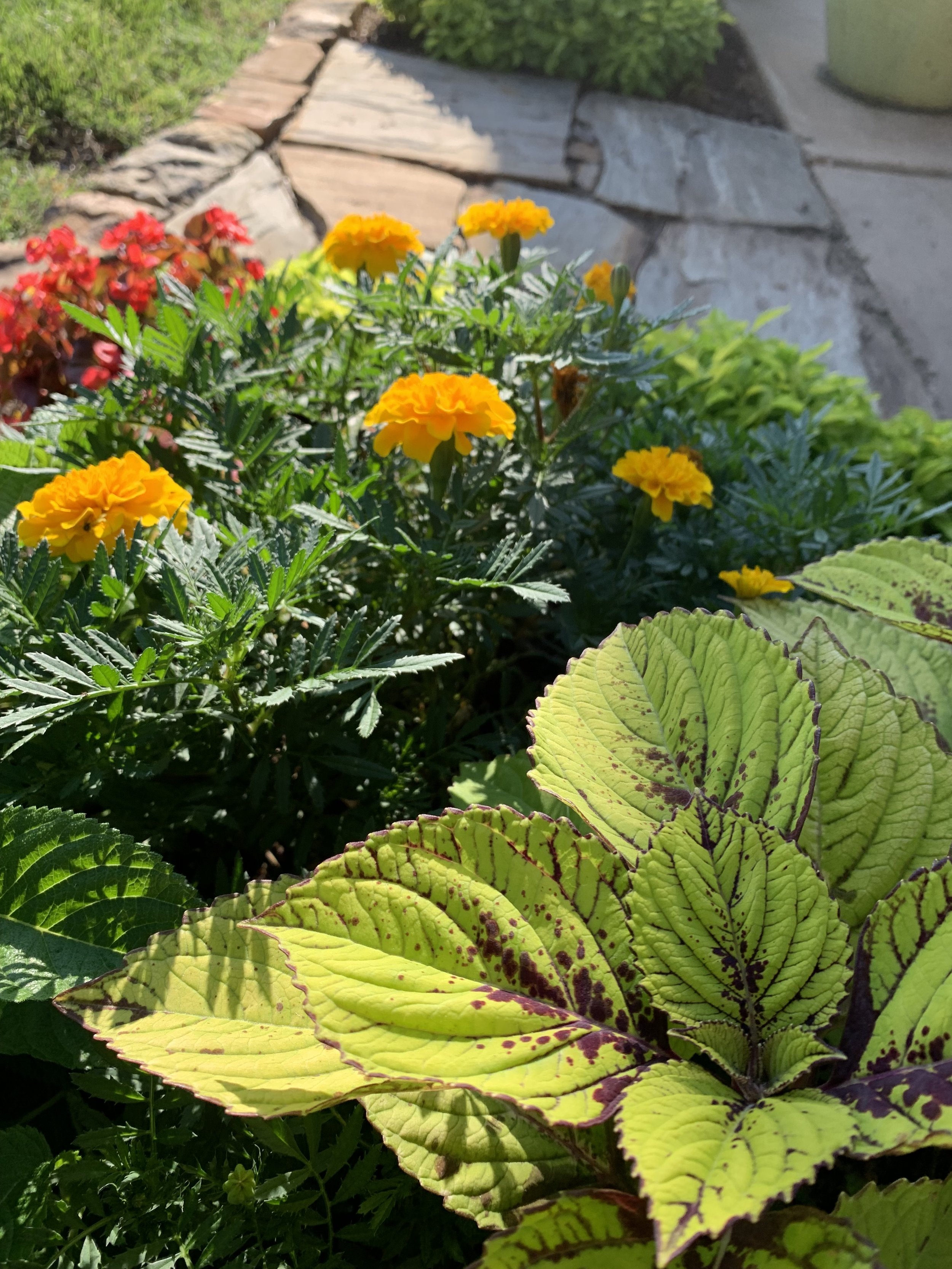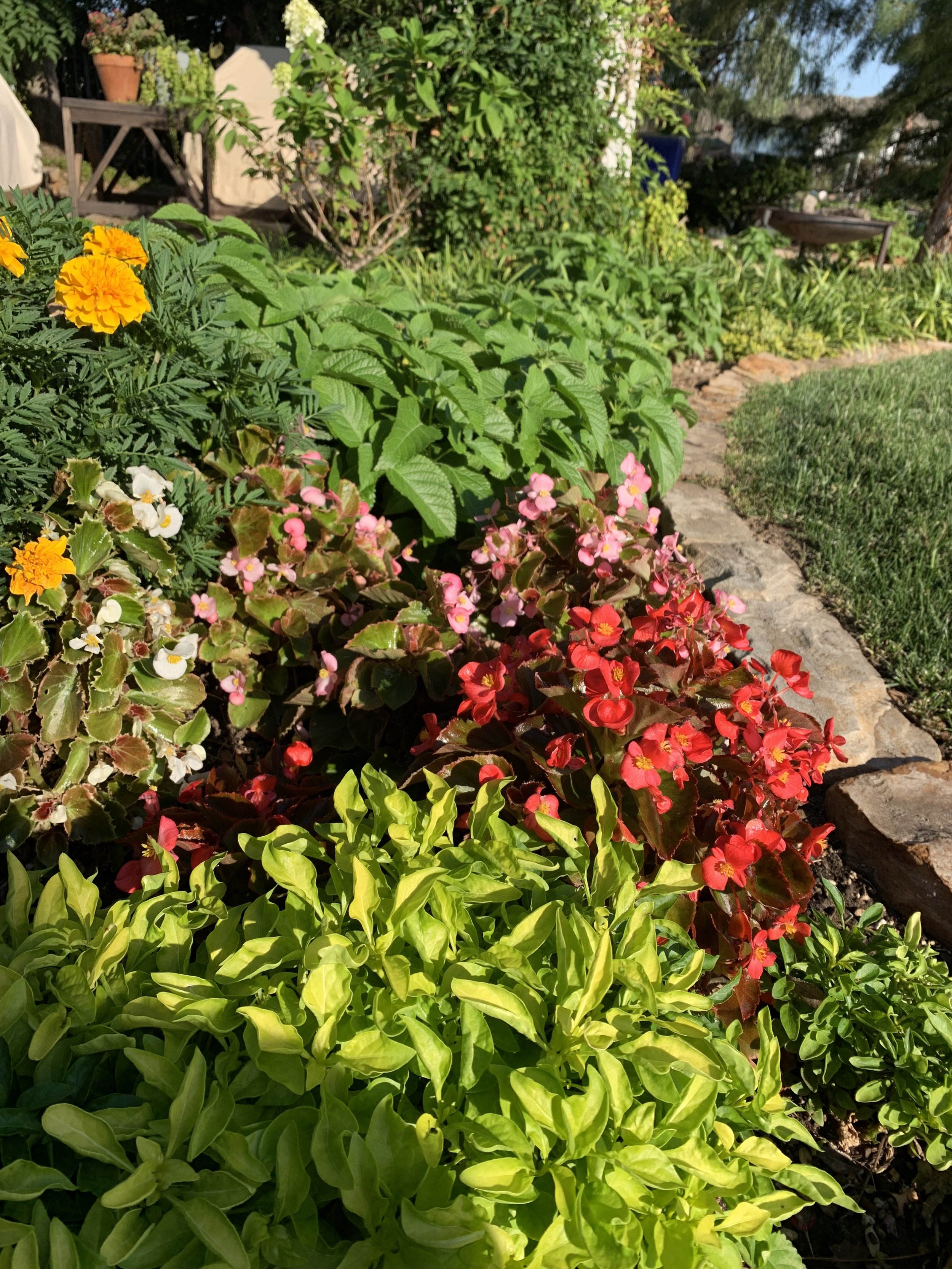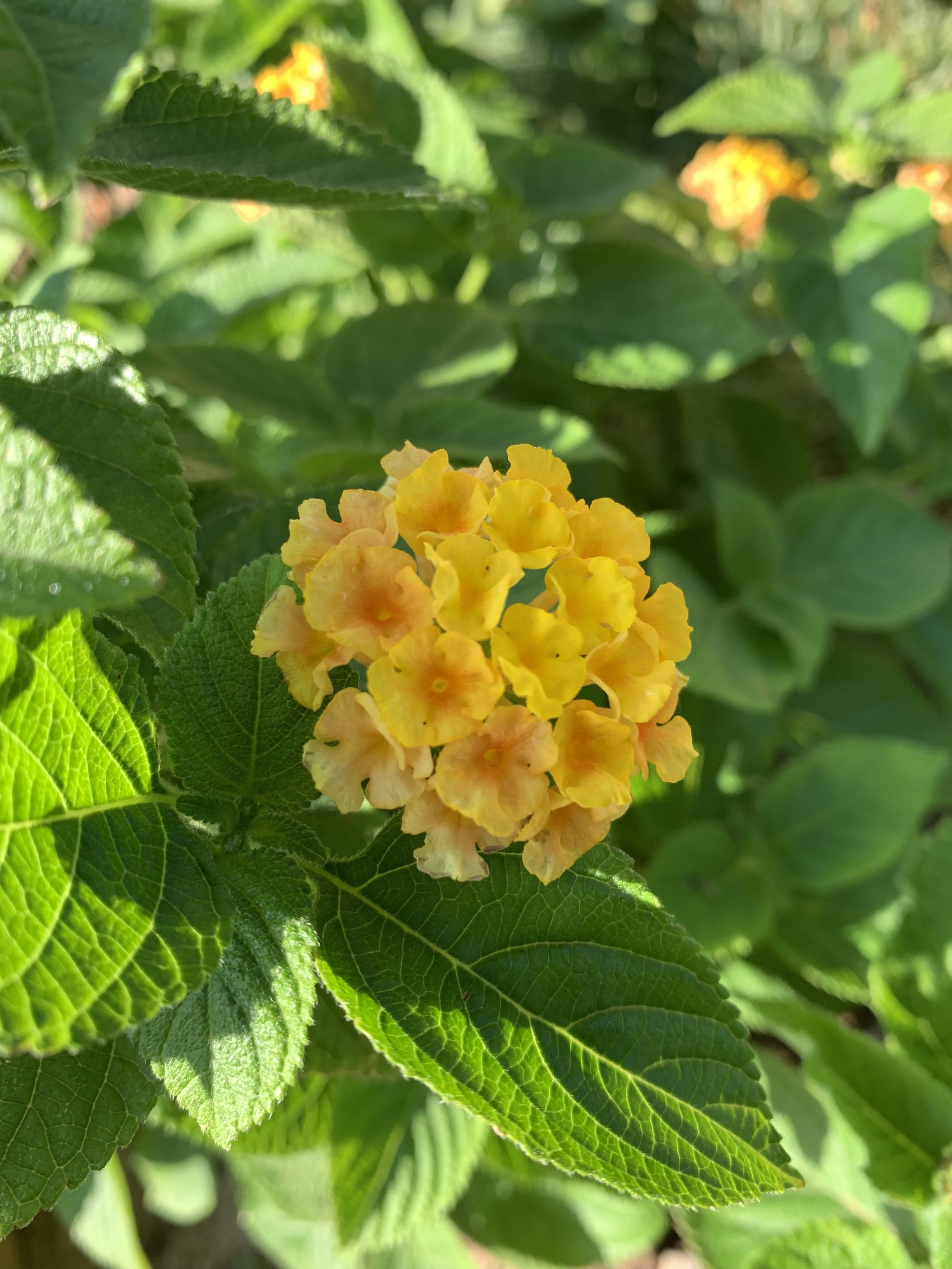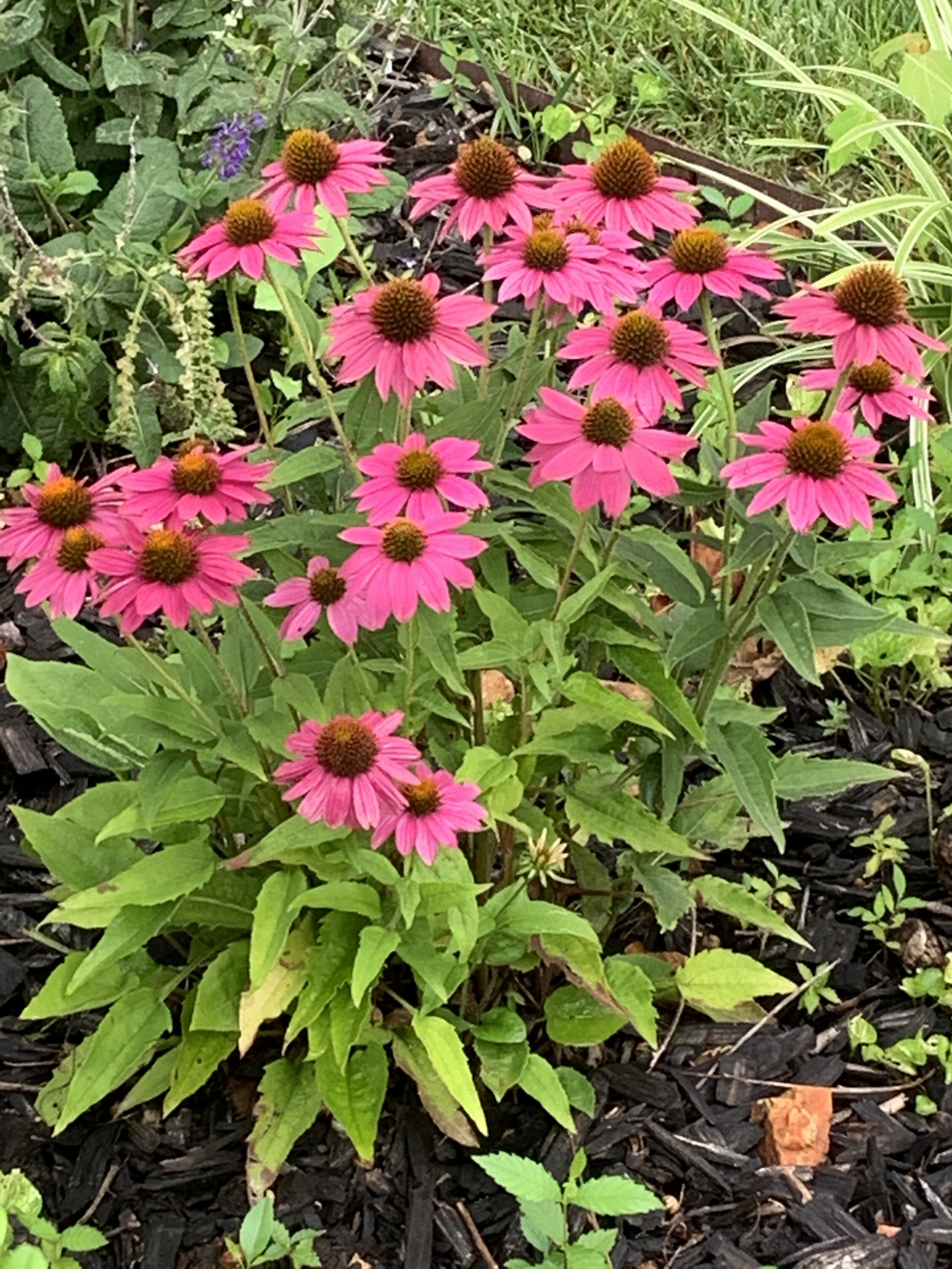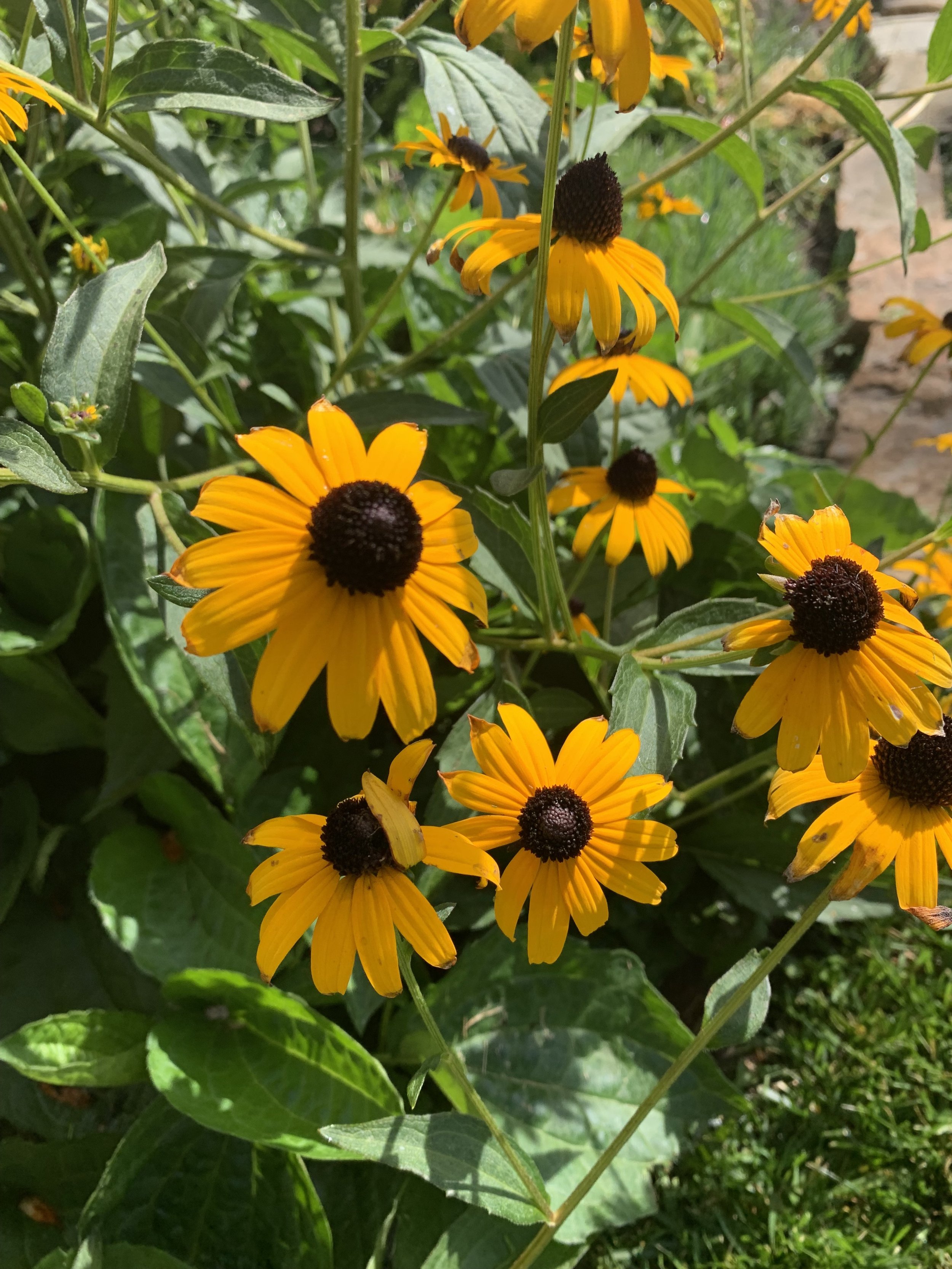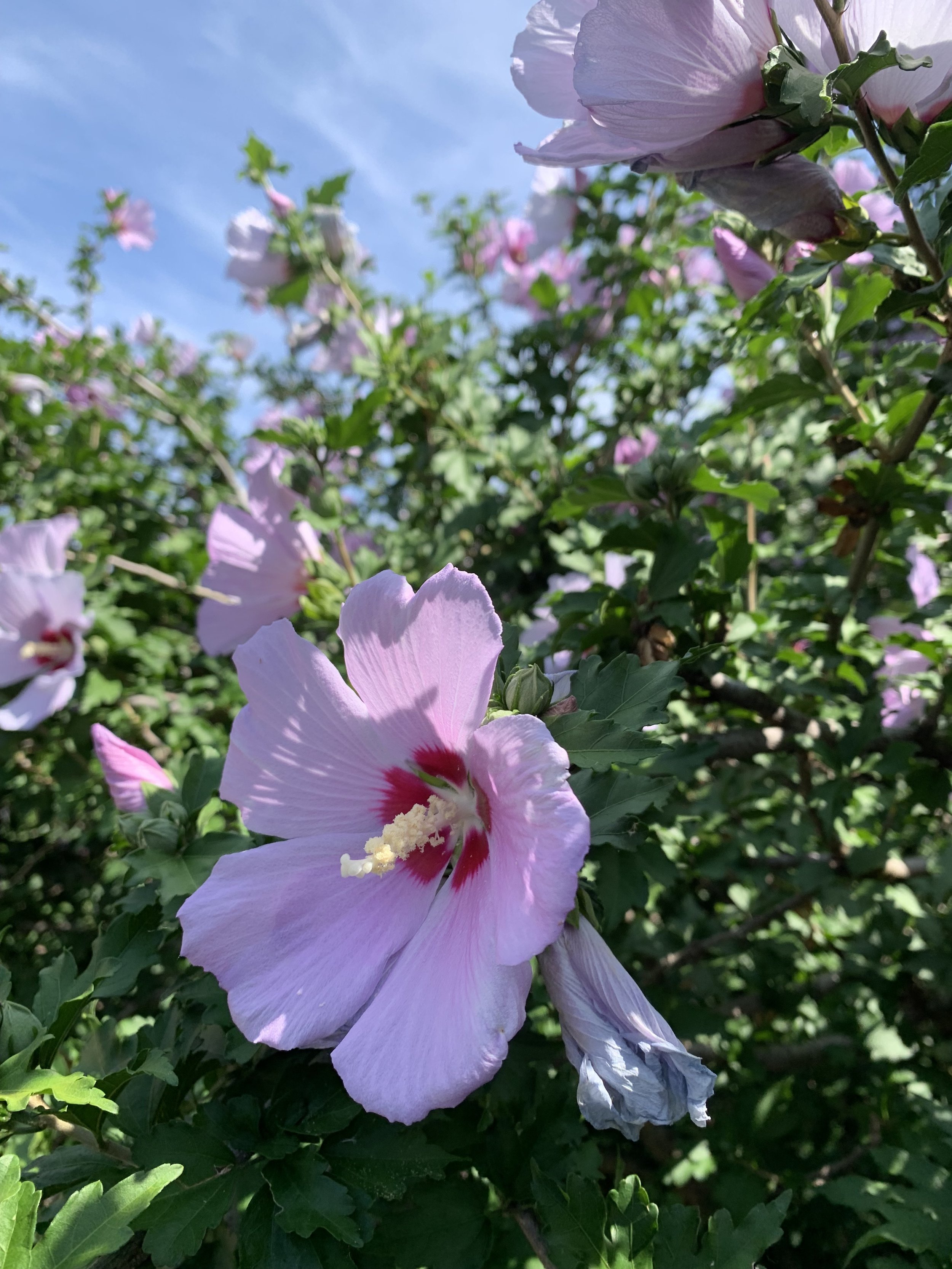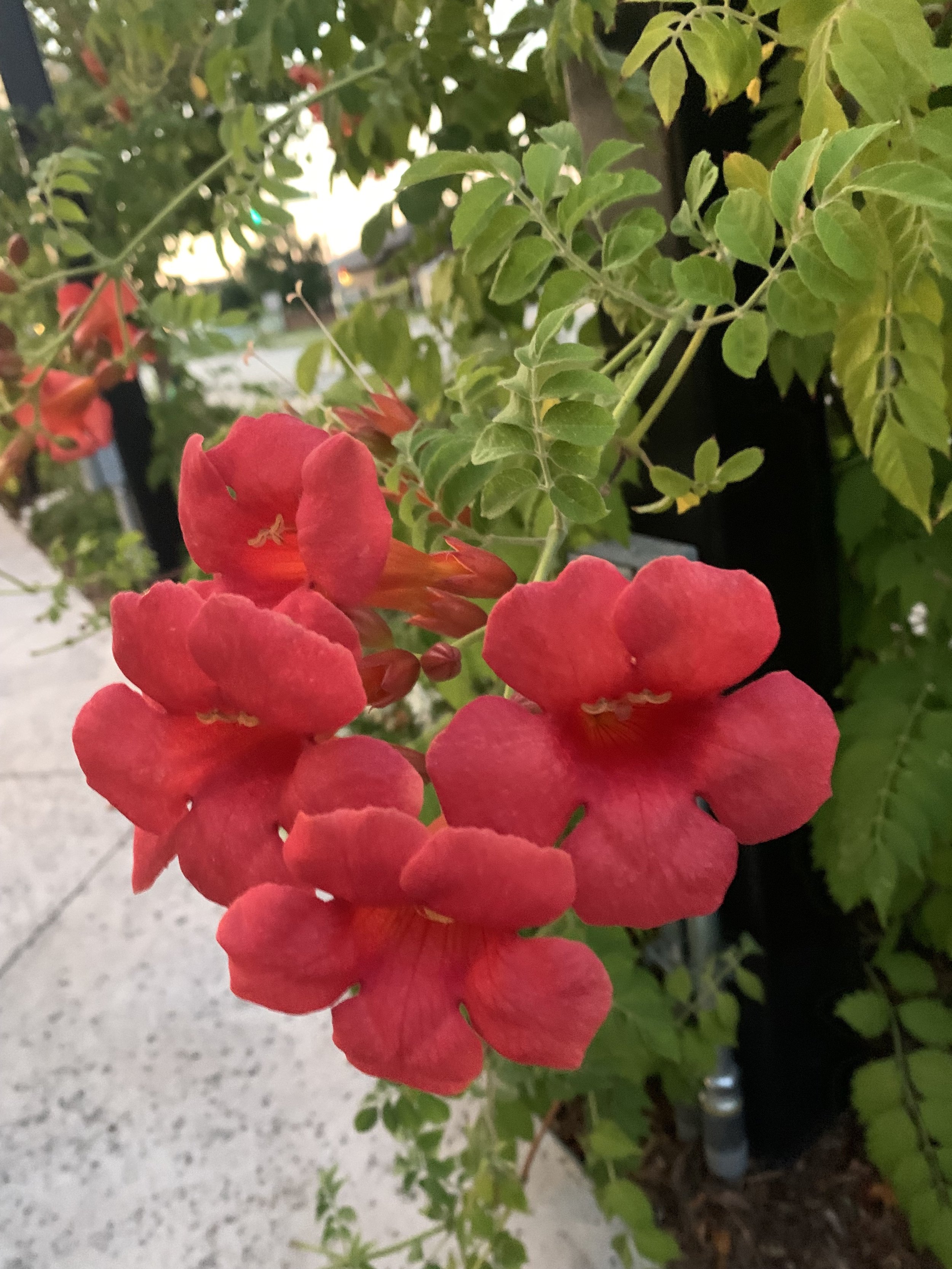Time for a Summer Landscape Color Check
Wow! The heat of summer is hanging on!
How’s your landscape handling the heat?
A good activity for late August is to create a summer landscape journal. Grab a few minutes and take pictures of your landscape while it is still hot. Jot down a few notes about plants that are doing well and the ones that are struggling.
Next spring you will be glad to have the information when you make summer landscape plans. Too often we get excited about a plant that looks great in April and May only to have it disappoint when the heat is on in July and August.
Great landscapes should include plants that add color and interest in every season, even when temperatures are pushing triple digits.
Here are a few things I have noticed doing well in the heat of late July and August:
The limes and red speckled leaves of Coleus make a nice accent to the yellow flower of Marigolds.
Joseph Coat is a great compliment for the reds of Bronze-Leaf Begonias.
Caladiums behind Impatiens is the perfect combination for shady areas of your landscape.
Annual Summer Seasonal Color
Coleus – Planted for the colorful foliage, it is available in both shade and sun varieties and many colors. Colors range from limey yellow to red with many that have speckled leaves of yellow, green, and red.
Joseph Coat – This low-growing, bright yellow-green annual is a great border in full to partial-sun areas. It is also available in a dark red but is not near as dramatic as the brightness of the lighter variety.
Lantana – You can’t beat lantana in the heat in full sun. Some of the more common varieties are New Gold, Dallas Red, and Confetti. Known for having a bushy growth habit, but there are varieties that are more compact and mounding.
Lantana, one of the best lovers of summer heat, comes in so many colors that there has to be one perfect for your summer landscape.
The dark reds and lime-red of these Coleus varieties make a great combination.
Penta – Another annual plant that thrives in full sun. Bright clusters of star-shaped flowers in red, pink, and white look great planted behind Joseph Coat.
Periwinkle – An old traditional annual plant that just keeps performing. Periwinkle thrives in full sun. White with red center is most common, but also is available in vibrant pinks, reds, and violets.
Strawberry Periwinkle, red Penta, Lemon Zest Lantana, Stain Glass Coleus in front of Black-eyed Susan make for a showy mid-summer landscape.
A great combination for shady areas in the heat of summer is Caladiums and Impatiens.
Periwinkle is a summer loving annual that brightens landscapes with vibrant pinks, reds and whites.
Strawberry Periwinkle with a compliment of Black-Eye Susan
Penta will continue to bloom in full sun to partial shade through the hottest days of summer.
The lime color of Joseph Coat is a great compliment to the rosy pink of Strawberry Periwinkle
Angelonia and Sunpatiens both love summer heat and sun.
Sunpatiens – All the color burst you would expect from impatiens, but they love full sun and heat. They come in a wide range of colors. Sunpatiens have become one of my favorite summer annual plants.
Angelonia – It is available in whites, pinks, purples, and blues and very often you will find it mixed. Plant in full to partial sun.
Sunpatiens and Lantana adding color in the summer sun.
Sunpatiens have become a staple for a splash of color in my summer landscape.
Orange Sunpatiens planted with Joseph Coat and yellow Marigolds.
Caladiums – The large colorful leaves make a great show in full or dappled shade. You will find them in reds, whites, and pinks. Caladiums are great at adding a burst of color to shady areas of the landscape.
Impatiens – Another old favorite that is hard to beat in the full shade areas of your landscape. It is available in many colors.
Caladiums and Impatiens combine to add a splash of color in shady areas.
Perennials
Black-eyed Susan – Grows 2-3’ tall with dark green foliage and vibrant golden-yellow daisy type flowers with a dark brown center. Blooming starts in late June and continues into August. Their show in the summer heat is second to no other perennial.
Coneflower – A native prairie plant that puts on a great show through the summer. Each plant will produce several clusters of 2-4” blooms. They are available in several colors, but the purple varieties are my favorite.
Coneflower add color to the landscape through the hottest times of the summer.
Using the perennial Black-eyed Susan in your landscape will add a splash of yellow through July and into August.
Black-eyed Susans add bold brilliant flowers in mid-summer to our landscapes.
Coneflower is a perennial that blooms in midsummer.
Crape Myrtle, the longest summer blooming plant become more brilliant as the summer gets hotter.
Maybe the hardiest Hydrangea, Limelight, blooms during the heat of midsummer and they do well in full sun. These are planted around a parking lot on the west side of a building.
Shrubs
Crape Myrtle – I have a tendency to mention them often, but as our longest-blooming summer shrub and/or tree they are a must-have for your landscape. Varieties come in dwarf (2-4’), semi-dwarf (up to 8’), and standard (up to 25’). Colors range from white, pink, purple, and red. It seems that the hotter the summer, the more brilliant their blooms.
Limelight Hydrangea – A very hardy hydrangea with unique mid-summer white blooms and a slight hint of green. They look great planted in mass, as a hedge or as a single specimen. Also, they do well planted in full sun.
Bobo Hydrangeas and Black-eyed Susan both thrive in the summer heat.
Hardy Hibiscus – A spectacular summer bloomer that will quickly make a dramatic impact to any landscape. Look for newer varieties as they have larger flowers. For most flowers, they need full sun. They are a great addition to a perennial garden or in front of an evergreen hedge.
Rose of Sharon – An old fashion shrub that deserves to be used more for flowers that appear from July through late summer. It grows in all soils and does well in hot locations. Blooms range from dark pink to lavender to white.
Rose of Sharon is an easy to grow plant that blooms July through last summer.
The large flowers of Hardy Hibiscus are an eye catcher throughout the summer.
Vines
Trumpet Vine – A favorite is the ‘Madame Galen’ variety. Trumpet-shaped salmon-red flowers throughout the summer for an extra-long blooming season. Great for covering up fences and climbing arbors.
Madame Galen Trumpet Vine have an extra long summer blooming season.
Visit public gardens during the hottest times of the summer to see what is doing great in their landscapes for fresh ideas. The Myriad Gardens, Will Rogers Horticulture Gardens, and OSU’s Botanical Garden are just a few in the area.
Also, don’t be shy. Stop at that house with the best summer color in your neighborhood and ask what they are growing!
What is putting on a show this summer in your landscape?
Lorne Hall
Hall | Stewart Lawn + Landscape
(405)367-3873
The Myriad Garden is a great to visit for landscape ideas. Many of the plants are well marked.


